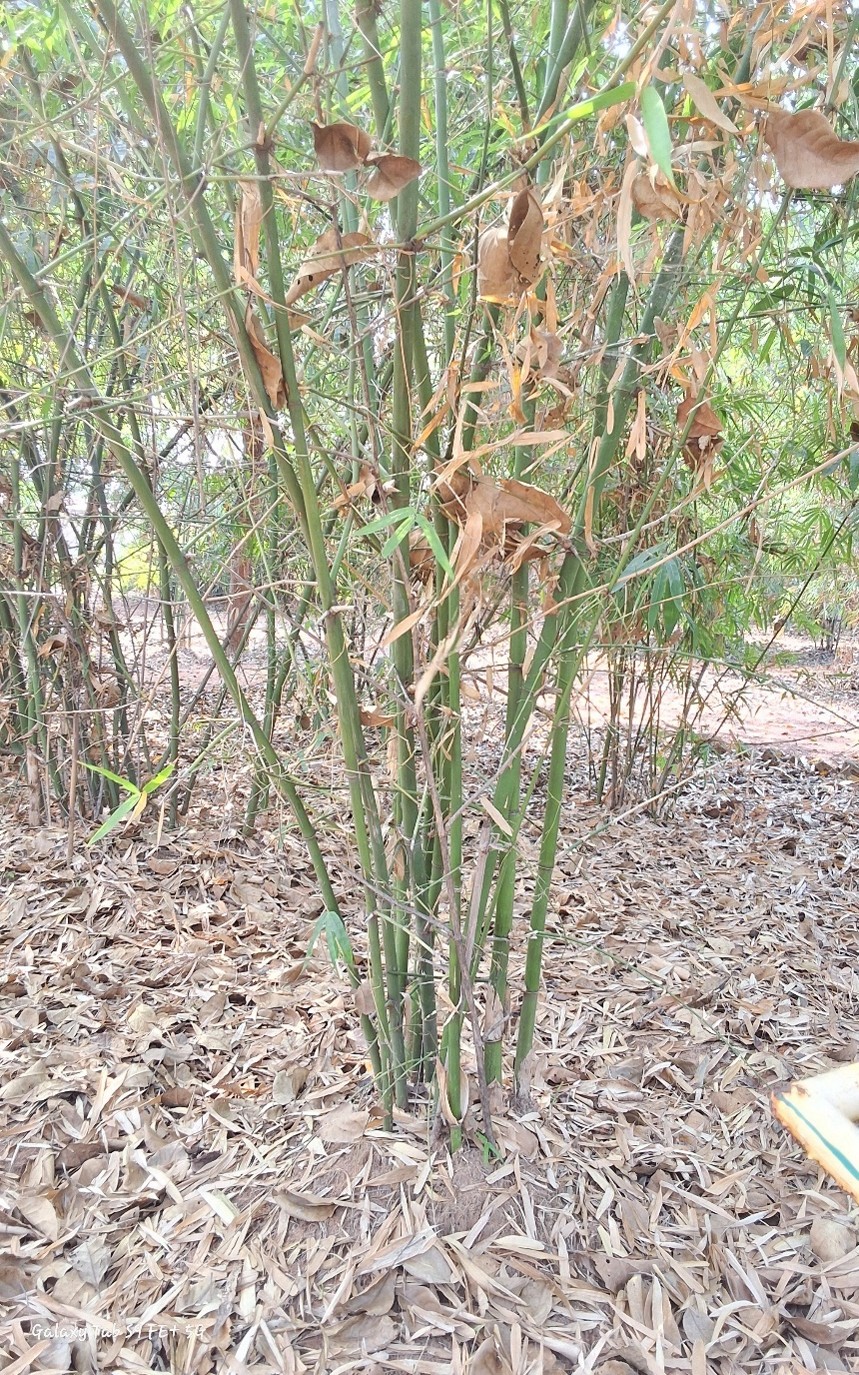Bambusa nutans

Bambusa nutans
Bambusa nutans, commonly known as Nodding Bamboo or Nakhla Bamboo, is a clumping bamboo species native to Southeast Asia, specifically India, Myanmar, and parts of China. This bamboo thrives in tropical and subtropical regions, often found in moist areas such as riverbanks and forest clearings. It is a versatile bamboo, used for a variety of applications including construction, soil erosion control, and as a source of edible shoots in some regions. Additionally, it serves in fencing, boundary marking, and producing furniture and handicrafts.
The culms of Bambusa nutans are dense, erect, and grow to a height ranging from 6 to 15 meters, with a diameter of 4 to 6 cm. Initially light green, the culms darken with age. The internodes measure between 25 and 35 cm, and the culm sheaths are green when young, turning pale yellow or brown as they mature. The adaxial surface of the sheath is smooth and glabrous, while the abaxial surface is slightly hairy. The margins of the sheath are ciliate, featuring soft bristles. The leaves of this bamboo are narrow lanceolate, measuring 15 to 30 cm in length and 2 to 4 cm in width, with acutely pointed tips.
The inflorescence is a large, loose panicle with long, drooping branches. The empty glumes are ovate, acute, and faintly nerved, while the flowering glumes are slightly larger and ciliate along the edges. The stamens are glabrous with visible anther exsertion, and the style is hairy. Flowering is rare, occurring in gregarious cycles every 30 to 50 years, and has been reported in India, Myanmar, and Bangladesh. The bamboo produces small, non-viable seeds, which results in propagation mainly through clump division, offsets, culm cuttings, or tissue culture.
This bamboo species grows well at altitudes ranging from 600 to 1500 meters and prefers well-drained, fertile loamy soils, though it is adaptable to a variety of soil types. Bambusa nutans is commonly cultivated for its practical uses and ornamental qualities in regions where it has been introduced, including Sri Lanka, parts of Africa, and other tropical areas. It is widely used in construction for poles, scaffolding, and small structures, and is also utilized for soil erosion control along riverbanks and in hilly areas. Its shoots are edible in some regions, adding to its versatility and value.
Listen Audio:
Need assistance? BRTC Faculty